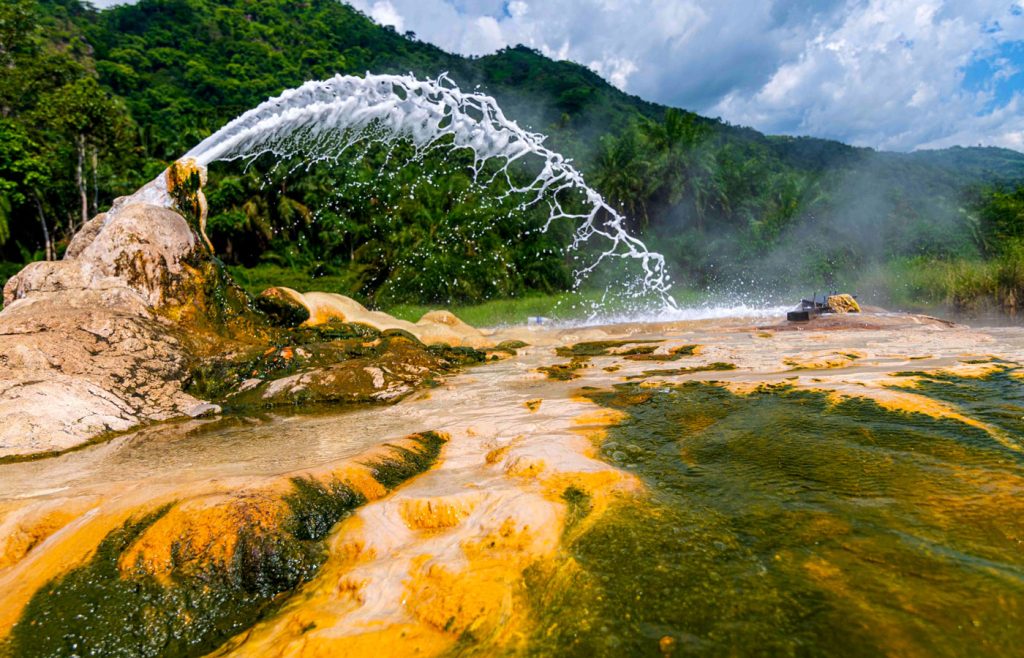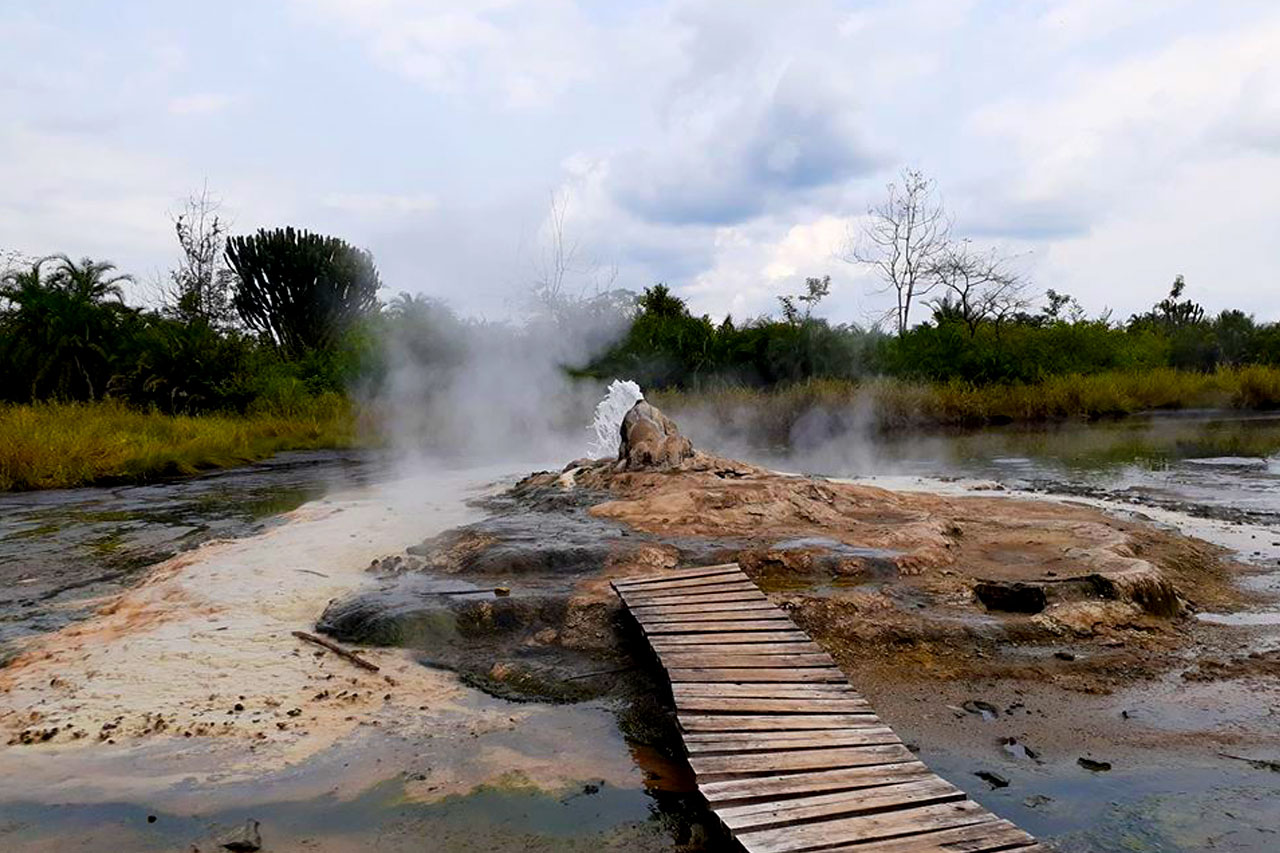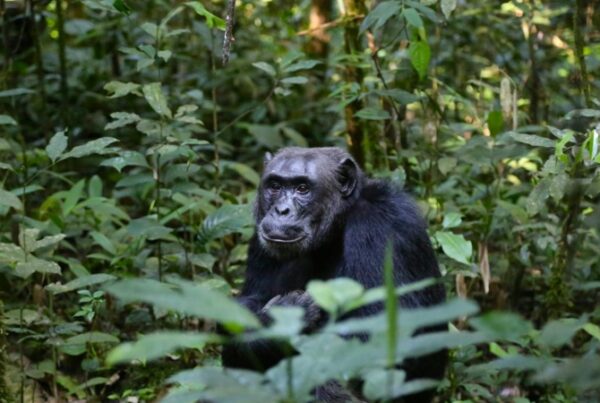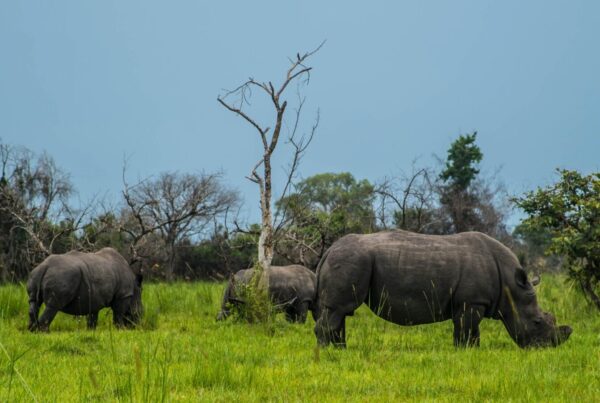Exploring Semuliki National Park: Uganda’s Birding Paradise
A Hidden Gem of African Wilderness
Nestled in the remote western corner of Uganda, where the vast Congo Basin merges with the Albertine Rift Valley, lies Semuliki National Park, a sanctuary often described as Uganda’s birding paradise. Unlike the world-famous Bwindi Impenetrable or Queen Elizabeth National Park, Semuliki remains relatively untouched, offering travelers an intimate and authentic wilderness experience. It is a destination that escapes the gaze of mass tourism, quietly preserving a wealth of biodiversity and cultural richness that makes it truly exceptional.
The park is celebrated for its extraordinary birdlife, but its story is far richer than avian wonders alone. Ancient rainforests, meandering rivers, bubbling hot springs, diverse wildlife, and vibrant local communities together weave a narrative that speaks to the very essence of African wilderness. Visitors who step into Semuliki find themselves immersed in a realm where Central African rainforest meets East African savannah, creating a melting pot of ecosystems and species that cannot be found elsewhere in the region.
To explore Semuliki is to be captivated by nature in its purest form: the calls of exotic birds reverberating through the forest canopy, the shimmering haze of geothermal springs rising into the morning air, the soft rustle of primates leaping between branches, and the stories of indigenous communities whose lives remain deeply intertwined with the forest. This is not simply a national park; it is a living, breathing mosaic of nature and culture, preserved for those who venture into Uganda’s lesser-known frontiers.
Location and Geography: The Heart of the Rift Valley
Semuliki National Park is situated in Bundibugyo District, straddling Uganda’s western frontier with the Democratic Republic of Congo. Encompassing about 220 square kilometers, the park may be modest in size, but it is incredibly rich in ecological diversity. The Semuliki River, which meanders lazily along the park’s western boundary, serves as a natural demarcation line between Uganda and Congo. Its floodplains, swamps, and oxbow lakes foster habitats for numerous aquatic species, particularly migratory and resident birds.
The park lies at an altitude ranging between 670 and 760 meters above sea level, making it one of the few lowland tropical rainforests in East Africa. This distinguishes it from the montane forests of Bwindi or Kibale and creates conditions that mirror those of the vast Congo Basin. Its forests are, in fact, extensions of the Ituri Rainforest in Congo, one of the oldest surviving rainforests in the world, estimated to date back more than 25,000 years.
Surrounding the park are remarkable geographical features that frame its identity. To the northeast rise the mystical Rwenzori Mountains, their snow-capped peaks often veiled in clouds. To the west stretches the seemingly endless expanse of Congo’s Ituri, while the fertile Semliki Valley itself is a product of tectonic activity that carved the Rift Valley eons ago. This dramatic geography not only shapes the park’s scenery but also supports a remarkable array of ecosystems, from dense rainforest to riverine woodland and swamp.
The Rainforest Ecosystem: An Ancient Refuge
Semuliki National Park protects one of the few remaining true lowland rainforests in East Africa. Entering its forest is like stepping back in time, into an environment that has existed unchanged for millennia. The canopy towers above like an emerald cathedral, its high branches interwoven with lianas and epiphytes, while the understory teems with shrubs, fungi, and ferns. The air is thick with humidity, carrying the earthy scent of decaying leaves and the sweet fragrance of flowering plants.
This rainforest is not merely beautiful; it is also immensely productive, sustaining countless species. Over 400 bird species, more than 60 mammals, and an unrecorded abundance of insects, amphibians, and reptiles inhabit these forests. Many of these species are endemic to Central Africa, underscoring the park’s unique role as a bridge between East and Central African biodiversity.
Unlike Uganda’s montane forests, Semuliki’s lowland rainforest is easier to explore at ground level, allowing visitors to observe ecosystems in close proximity. Birders, in particular, find themselves immersed in habitats where every turn reveals new calls, colors, and movements. It is this intact and ancient ecosystem that gives Semuliki its reputation as a living museum of biodiversity.
Birding Paradise: The Crown Jewel of Semuliki
Among Semuliki’s greatest treasures is its reputation as one of the top birding destinations in Africa. With over 441 recorded species, the park accounts for nearly 40% of Uganda’s total bird species and almost 67% of the country’s forest birds. Such density and variety make it an unrivaled haven for ornithologists and birdwatching enthusiasts.
Endemic and Rare Species
Many of the species found in Semuliki are endemic to the Congo Basin, meaning that Uganda is the only East African country where they can be spotted. This gives birders an exceptional opportunity to record lifers without traveling deep into Central Africa. Among the most sought-after species are:
-
Nkulengu rail: A shy bird known for its loud, booming calls that often echo through the forest at night.
-
Congo serpent eagle: A striking raptor that soars gracefully above the canopy.
-
Black-wattled hornbill: A large and charismatic species often spotted flying in pairs across the forest.
-
White-crested hornbill: Recognizable by its unique crest and noisy calls.
-
Blue-billed malimbe: A colorful weaver species rarely found outside Central Africa.
-
Yellow-throated cuckoo and Crested malimbe: Both highly prized by birders for their rarity.
Beyond these, the park also shelters species such as the red-billed dwarf hornbill, piping hornbill, and the elusive African piculet, each adding to the richness of the birding checklist.
The Birding Experience
Birding in Semuliki is an experience that demands patience, skill, and a keen sense of observation. Guided walks along the Kirumia Trail, which stretches for about 13 kilometers through the heart of the forest, are particularly rewarding. Birders often spend hours along this trail, pausing frequently to listen for calls or spot movements in the canopy. Unlike open savannah birding, the forest environment makes every sighting a triumph, and the sense of discovery is heightened with each encounter.
What makes Semuliki especially appealing is that birding is not limited to one season. While certain migratory species arrive during specific months, the park’s endemic and resident birds remain active year-round. This ensures that birders, regardless of when they visit, are guaranteed a rewarding checklist.
Wildlife Beyond Birds
Although birds are the highlight, Semuliki National Park shelters an impressive variety of other wildlife. Over 60 species of mammals have been recorded, including some that are rarely seen elsewhere in Uganda.
The park is home to forest elephants, smaller and more elusive than their savannah counterparts. Their presence is often indicated by broken branches and footprints along muddy trails. Forest buffaloes, distinguishable by their darker coats, roam the swamps and floodplains. Antelope species such as the bay duiker and the rare water chevrotain add to the diversity, though their secretive nature makes sightings a rare privilege.
Primates also enrich Semuliki’s wildlife portfolio. Visitors may encounter black-and-white colobus monkeys, red-tailed monkeys, De Brazza’s monkeys, and occasionally even chimpanzees, though the latter are not habituated for tourism. Nocturnal primates such as pottos and galagos add an air of mystery during night walks.
Reptiles, amphibians, and insects abound, with species of butterflies alone numbering in the hundreds. Crocodiles and hippos are frequently seen along the Semuliki River, creating thrilling opportunities for riverine exploration.
The Sempaya Hot Springs: Wonders of Fire and Water
One of the park’s most iconic attractions is the Sempaya Hot Springs, geological marvels that steam and bubble in the midst of the rainforest. There are two main springs: the “male” hot spring, locally called Bintente, which is a large pool of boiling water, and the “female” hot spring, known as Nyasimbi, which is smaller but shoots water up to two meters high.
Beyond their scientific intrigue, the hot springs hold deep cultural and spiritual significance for the local communities. Legends tie them to ancestral spirits, fertility rituals, and community gatherings. Visitors often find guides sharing these stories, weaving myth and science into a captivating narrative. The springs also serve practical uses, as locals traditionally cook food such as eggs and plantains in the boiling waters.
Cultural Heritage: The People of Semuliki
Surrounding the park are diverse communities whose cultures enrich the visitor experience. The most notable are the Batwa pygmies, one of Africa’s oldest surviving indigenous groups. Traditionally forest dwellers, the Batwa once depended entirely on hunting, gathering, and forest resources for survival. Although modern pressures have altered their way of life, their knowledge of the forest remains unparalleled.
Visitors can engage with Batwa communities to learn about traditional dances, storytelling, hunting demonstrations, and herbal medicine. These cultural encounters not only deepen understanding but also provide vital support to local livelihoods.
The Bamba and Bakonzo people also inhabit the region, contributing to the area’s cultural richness. Their farming practices, rituals, and folklore demonstrate a profound connection with the land, while their vibrant markets and crafts offer insights into daily life in Bundibugyo.
Activities and Attractions
Exploring Semuliki is an adventure that unfolds across multiple dimensions. Birding remains the star activity, but nature walks, cultural encounters, and river excursions add variety to the experience.
Guided forest walks bring travelers into intimate contact with the rainforest’s beauty, from towering trees to elusive primates. Visits to the hot springs combine natural wonder with cultural storytelling, offering unique photo opportunities.
For those seeking more adventurous experiences, the Kirumia Trail provides a day-long hike through the forest to the Semuliki River, rewarding hikers with sightings of both birds and mammals. The Red Monkey Trail, closer to the park’s edge, is ideal for primate viewing. Night walks reveal a different side of the forest, alive with nocturnal creatures.
Cultural tours to nearby communities complete the Semuliki experience, ensuring that visitors leave with not only memories of wildlife but also an appreciation of human traditions intertwined with the forest.
Seasons of Discovery: When to Visit
Semuliki National Park welcomes visitors throughout the year, yet the experience varies with the seasons.
The dry seasons, from December to February and June to September, are considered the best for birding and hiking. Trails are more accessible, and wildlife activity is heightened around water sources. Birders, in particular, find these months rewarding, as visibility improves and activity is concentrated.
The wet seasons, from March to May and October to November, transform the forest into a lush, vibrant paradise. The rains bring out an explosion of life, from frogs and insects to flowering plants. Though trails can be muddy and challenging, the atmosphere is magical, and migratory bird species enhance birding opportunities.
Ultimately, the choice of when to visit depends on personal interests. Those seeking comfort and ease of movement may prefer the dry months, while those enchanted by the raw vibrancy of rainforests will find the wet season equally rewarding.
Unlocking Uganda’s Birding Treasure
Semuliki National Park is not just a destination—it is an experience that captivates the senses, ignites curiosity, and deepens appreciation for Africa’s wilderness. From its ancient rainforests to its steaming hot springs, from the calls of rare birds to the traditions of its people, Semuliki is a place where nature and culture exist in harmony.
For birders, it stands unmatched as Uganda’s finest paradise of wings and songs. For wildlife enthusiasts, it offers encounters with species rarely seen elsewhere. For cultural travelers, it reveals traditions rooted in centuries of coexistence with the forest. Above all, it is a sanctuary where one can escape the ordinary and connect with Africa at its most authentic.
Travelers who long to explore this hidden gem are encouraged to embark on their journey with expert guidance. For a seamless and enriching safari that brings together Uganda’s wonders, it is highly recommended to book your African tours and safaris with WildHorn Africa, a trusted partner in crafting unforgettable journeys into the heart of the continent.





 WildHorn Africa – Authentic and unforgettable tours across Africa, guided by local experts who know the land, wildlife, and culture best.
WildHorn Africa – Authentic and unforgettable tours across Africa, guided by local experts who know the land, wildlife, and culture best.


